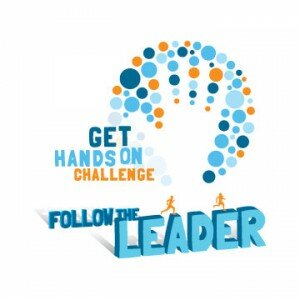
Friends,
As we continue to tally the impact of the Martin Luther King, Jr. National Day of Service last month, I wanted to highlight some results and share with you how we are carrying Dr. King’s vision forward through two recently launched initiatives that continue to build on the strategy of service as a solution.
Martin Luther King Jr., Day of Service
 More than 120,000 people volunteered in 4,900 projects through HandsOn Network, the volunteer arm of Points of Light Institute, for the 2011 Martin Luther King Jr., Day of Service. Our Community Cinemas and Sunday Supper programming drew an additional 5,000 participants. In the realm of social media, our Martin Luther King Jr. Day messages potentially reached an audience of 7 million through Facebook, Twitter and the HandsOn Blog.
More than 120,000 people volunteered in 4,900 projects through HandsOn Network, the volunteer arm of Points of Light Institute, for the 2011 Martin Luther King Jr., Day of Service. Our Community Cinemas and Sunday Supper programming drew an additional 5,000 participants. In the realm of social media, our Martin Luther King Jr. Day messages potentially reached an audience of 7 million through Facebook, Twitter and the HandsOn Blog.
Many stories came out of this day of national engagement, like the one we received from Lyndsay Tyree, an AmeriCorps VISTA member in Issaquah, Washington. Lyndsay was scheduled to lead a project on MLK Day for 40 volunteers at a local organization serving the homeless. But just 24 hours before the start time, unexpected flooding caused the project to be cancelled. Lyndsay now had 40 eager volunteers, and no place for them to serve.
With assistance from Katie Weber, another AmeriCorps member Lyndsay had met at the National Conference on Volunteering and Service, the group was quickly connected with Seattle Works. Even with an extremely short turnaround time, Seattle Works was able to place Lyndsay and her 40 volunteers on a project at Rose Hedge, an organization that provides transitional housing and health care to those living with HIV and AIDS.
The day, which had threatened to prove unproductive for Lyndsay’s team, ended up being a moving experience for them all. While working at Rose Hedge, many of the volunteers got the opportunity to speak with men and women living with HIV and AIDS. By the end of the day, the team was touched and changed by their interaction and work on the project.
This story illustrates the importance of connections and relationships, and speaks to the power of a robust service Network. Hands On Network, through its volunteers, AmeriCorps members, the National Conference on Volunteering and Service all build a powerful infrastructure for action
Follow the Leader
 In order to channel the energy and engagement of Martin Luther King Jr. Day into a deeper and more consistent commitment to volunteering, Points of Light recently launched Follow the Leader, an innovative campaign driven by a thriving online community.
In order to channel the energy and engagement of Martin Luther King Jr. Day into a deeper and more consistent commitment to volunteering, Points of Light recently launched Follow the Leader, an innovative campaign driven by a thriving online community.
By simply registering for Follow the Leader at www.gethandson.com, members gain access to official Project Playbooks. These step-by-step guides, for some of the most successfully implemented volunteer projects, let anyone start, manage and complete a high impact project.
To inspire activity in Follow the Leader, we are offering some extraordinary incentives, including an all expense paid trip for two to the Philippines for a one week “Volunteer Vacation” coordinated by HandsOn Manila.
Overall, Follow the Leader, which runs through May, will help us reach more service minded people, increase and mobilize the number of Americans involved in volunteer service, and magnify the power of service as a solution.
As always, we value your ongoing support to help people take action to change the world.
In Service,

Michelle Nunn
CEO, Points of Light Institute, and Co-Founder, HandsOn Network
Normal 0 false false false EN-US X-NONE X-NONE MicrosoftInternetExplorer4
 Follow the Leader
Follow the Leader
In order to channel the energy and engagement of Martin Luther King Jr. Day into a deeper and more consistent commitment to volunteering, Points of Light recently launched Follow the Leader, an innovative campaign driven by a thriving online community.
By simply registering for Follow the Leader at www.gethandson.com, members gain access to official Project Playbooks. These step-by-step guides, for some of the most successfully implemented volunteer projects, let anyone start, manage and complete a high impact project.
To inspire activity in Follow the Leader, we are offering some extraordinary incentives, including an all expense paid trip for two to the Philippines for a one week “Volunteer Vacation” coordinated by HandsOn Manila.
Overall, Follow the Leader, which runs through May, will help us reach more service minded people, increase and mobilize the number of Americans involved in volunteer service, and magnify the power of service as a solution.



 32. Be a good listener.
32. Be a good listener.

 This past September, Adam and I got married in Boston and several of our fellow AmeriCorps*VISTA friends were there to celebrate with us! We both continue to be involved with AmeriCorps through our non-profit work. I serve as the Member Development Manager with the Massachusetts Promise Fellowship, a statewide AmeriCorps program that places members at non-profits, city agencies, and schools to create, lead, and manage youth development projects.
This past September, Adam and I got married in Boston and several of our fellow AmeriCorps*VISTA friends were there to celebrate with us! We both continue to be involved with AmeriCorps through our non-profit work. I serve as the Member Development Manager with the Massachusetts Promise Fellowship, a statewide AmeriCorps program that places members at non-profits, city agencies, and schools to create, lead, and manage youth development projects. 1.
1. 


 Today’s post comes from Hannah Dalporto, a Youth Leadership Intern with
Today’s post comes from Hannah Dalporto, a Youth Leadership Intern with 
 In order to channel the energy and engagement of Martin Luther King Jr. Day into a deeper and more consistent commitment to volunteering, Points of Light recently launched
In order to channel the energy and engagement of Martin Luther King Jr. Day into a deeper and more consistent commitment to volunteering, Points of Light recently launched 

 Earlier this week on NPR there was a story about
Earlier this week on NPR there was a story about 
